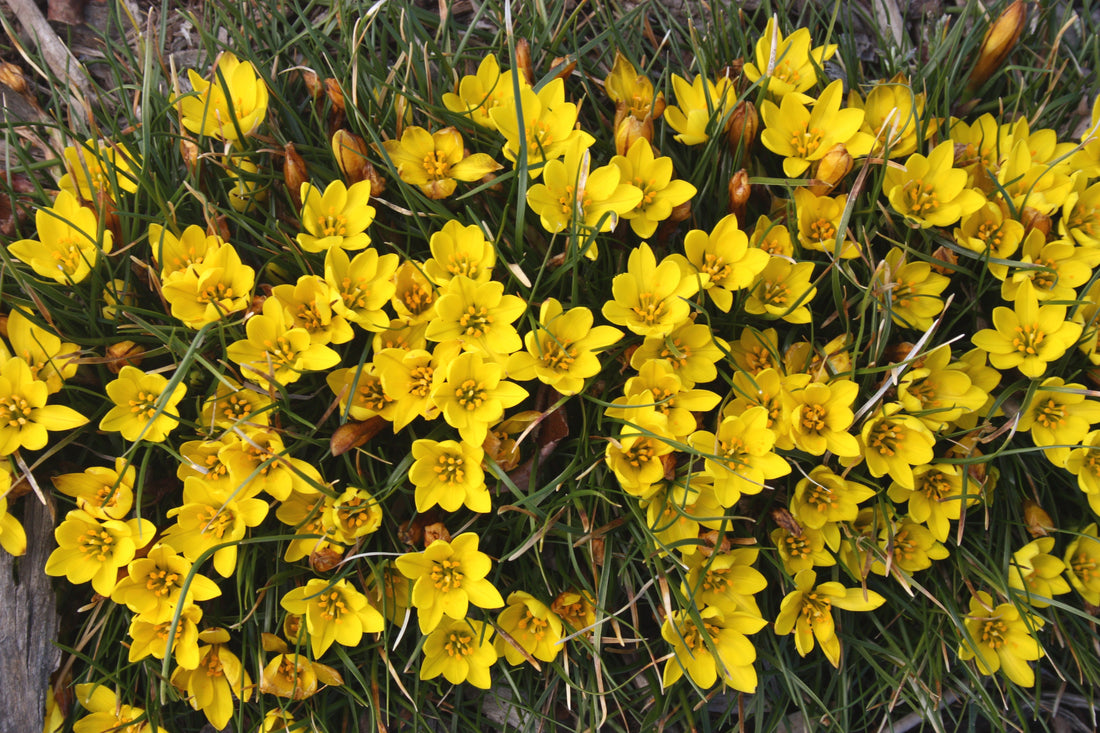Successful garden design involves more than sight. A great garden is a sensory experience of sight, sound, touch, and smell. Most gardeners know the overwhelming cheap perfume scents offered by tea olives, gardenias, and ginger lilies but odors come in a myriad of forms and can add pleasant or surprising experiences when tucked in all over the garden. Of course, there are the shocking odors of plants like Amorphophallus (corpse flowers), that may induce your neighbors to call the authorities to search for a decaying ex-lover—that’s an experience of a different kind and while I enjoy the look on a visitor’s face as they pass a Dracunculus that emits an odor like one has passed gas through an onion, this article will stick to the more pleasant experiences. I hope you enjoy these short descriptions of some of the most surprisingly pleasant plants you might not have thought about having some of the most fragrant flowers or fragrant foliage.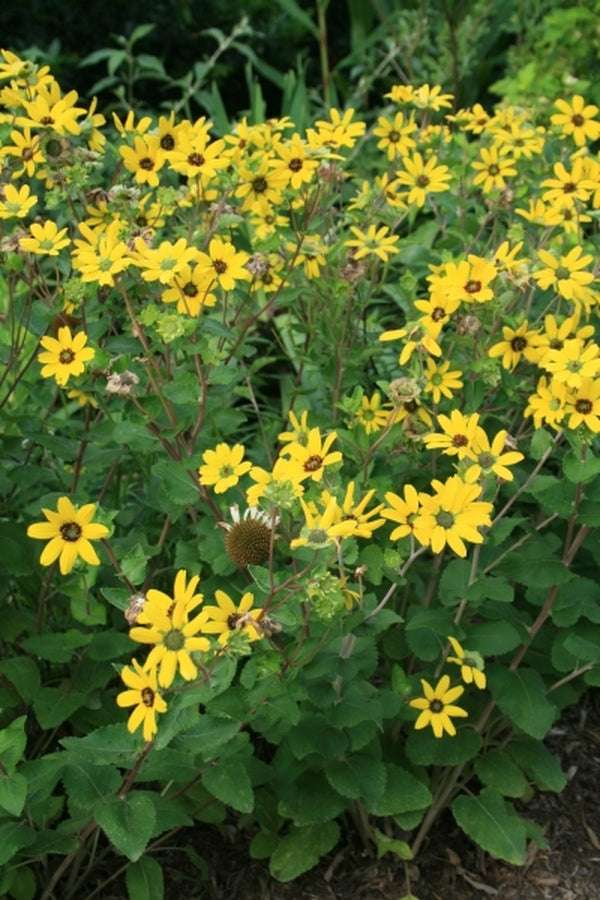
Berlandiera pumila 'Chocoholic'
Berlandiera pumila ‘Chocoholic’ (Soft Green Eye Chocolate Flower) Right out of the box let me introduce you to one of the most amazing perennials for gardens in the South. Berlandiera is a genus of 3 Southwestern and 2 Southeastern natives that nearly no gardener has ever heard about. These are Aster family members and produce golden yellow ray flowers and green disks that fade to a chocolate tinge with age. This is not just another DYC (Damn Yellow Composite), it is a clumping 2-3’ tall never-ending burst of color from May through frost with scattered flowers produced until frost. The real delight is the odor that is produced morning through early afternoon that smells for all the world like chocolate, well, actually chocolate tootsie-roll (do young people even know what one of those are anymore?). Though the species occurs from the sandhills of South Carolina across the coastal plain to Texas, ours are from a collection from Lee County, Texas in 2004. A tip to keep plants looking great and producing tons of flowers is to cut back aging stems to the ground once the flowers have faded. Plants readily produce new shoots just as large as the last and will continue to do so until hard frost. (Hardiness Zone 7a-9b, at least)
Aloysia virgata
Sporobolus heterolepis (Prairie Dropseed) Another mindblower — you may know that Lemon Grass has scent when crushed but if you have been out in the garden working in the late afternoon in the summer around Prairie Dropseed you have probably noticed the distinct and pleasant smell of sweet popcorn mixed with mild cilantro. Believe it or not, this is coming from this grass. We have long wanted a selection of this species that is much more at home in the upper Midwest and now, it appears we have it. Our Prairie Dropseed has been selected from seedlings obtained from the cultivar ‘Rhoda,’ a Stuart Fink selection that holds its flowers well above the foliage. It forms dense clumps of low glossy green foliage from which rise the 24-30” tall flowering stems which sport nice panicles that turn a golden-straw color when in fruit. Yeah…an aromatic grass, someone needs to make incense from this! (Hardiness Zone 3a-9b)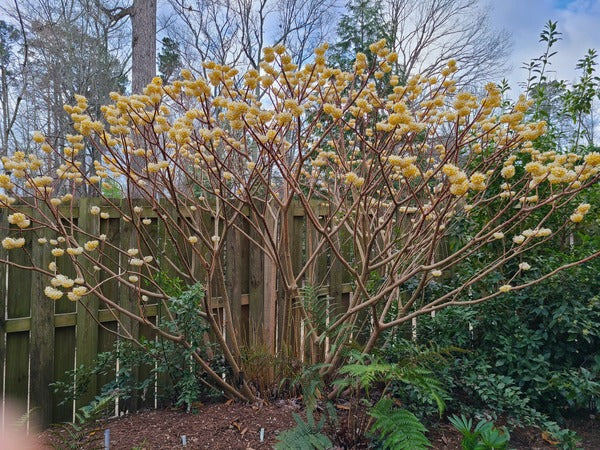
Edgeworthia chrysantha 'Snow Cream'
Aloysia virgata (Sweet Almond Tree Verbena) Most information you will find on this South American species will tell you it shouldn’t grow north of south Georgia. Don’t believe everything you read; plants aren’t literate. We have found this plant to be fully hardy here but freezes back to the ground in most years. Though in warmer climates it may make a 15’ tall shrub, in our garden it grows as an 8’ tall perennial that produces a fairly open shrub filled from July through September with the most fragrant white flowers you can imagine. The odor is best described as a mixture of vanilla and almond extracts and is evident many feet away from the plant when it is strongest (late afternoon through evening). If you’re entertaining in the garden after dark, you will find the odor delightful — this plant could be called a night blooming plant because the nectar and odor are strongest at that time. Provide plenty of space in a sunny or part sun location for this amazing plant that deserves space in any garden concerned with perfumery — we can’t imagine gardening without it. (Hardiness Zone 7b-10b)
Nothoscordum sellowianum
Edgeworthia chrysantha ‘Snow Cream’ (Snow Cream Paper Plant) Though we might think of summer as the sultry, scent-filled season, this incredible late winter flowering species produces intensely fragrant flowers that smell like you magnified the odor of an entire bouquet of daffodils. This 2000 Plant Delights/JLBG introduction is one of the most prized plants in our garden. The flower buds open steadily from mid-January to early April, producing an overwhelmingly fragrant display of pendent, golden yellow flowers. All summer, the 8' tall x 8' wide umbrella-shaped clump of this woody daphne cousin is composed of smooth, brown trunks, adorned with plumeria-like leaves. The foliage drops in mid-December to reveal both the wonderful bark and the large, silvery flower buds. Edgeworthia chrysantha 'Snow Cream' is a triploid form that is much more winter hardy (below 0 degrees F) than the older diploid form which used to be sold as Edgeworthia papyrifera. (Hardiness Zone 7b-10b)
Sinningia tubiflora
Nothoscordum sellowianum (False Yellow Crocus) If you already have your Edgeworthia adding that dandy daffodil odor to the late winter landscape, you should pair that with the very strong and “unique” fragrant flowers of one of our favorite bulbs, False Yellow Crocus. This amazing plant from Argentina is mostly summer dormant and requires a sunny location with good drainage. Beyond these simple requirements, it has proven one of the most resilient and easy to grow bulbs we’ve tried. It is sterile (no seed) and spreads slowly by bulb division to form low dense clumps of narrow leaves rising only 1-2” above the plant that are covered from January through early May with a succession of golden yellow flowers that are extremely fragrant. The fragrance is sweet from a distance but if you stick your schnoz right up in a cluster you’ll swear that sweetness was combined with mothballs from grandma’s closet. (Hardiness Zone 7a-8b)
Cestrum parqui
Sinningia tubiflora (Tube-flowered Hardy White Gloxinia) One of the real joys of gardening is finding a plant that you think can't be hardy and then discovering that it becomes an easy-to-grow staple in your garden. Such is the case with the hardy gloxinia, Sinningia tubiflora. If you would like the odor of a jasmine or gardenia without the shrubbery this fantastic plant is for you. Much like many fragrant white flowers it is night-blooming (releases odor late in the afternoon-evening) which attracts moths as pollinators. Forming large underground tubers, Sinningia tubiflora not only lives, but spreads nicely in the garden. All summer long, the green, felty leaf clumps are topped with 20" tall spikes of 6" long, very fragrant, pure white flowers...somewhat resembling Hosta plantaginea. The hummingbirds and visitors alike go nuts when they see this in our gardens. You must grow this plant, even if you need to use containers in the North. (Hardiness Zone 7b-10b)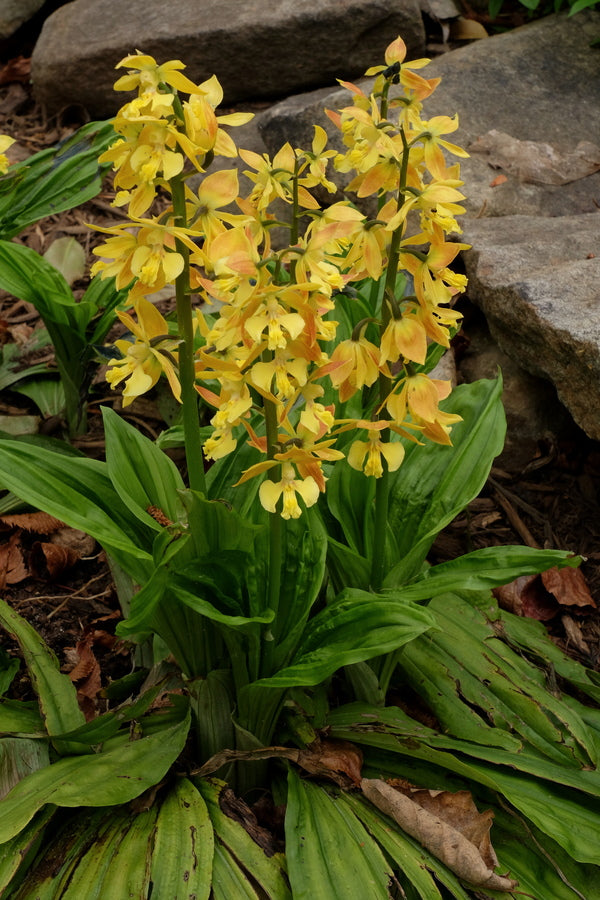
Calanthe 'Takane'
Cestrum parqui (Willow-leaved Jessamine) Yet another amazing night blooming species from South America with flowers that are open 24/7 but scent that is strongest after sunset. These resilient shrubs can be grown in virtually any sunny setting and reach 8’ tall and 8’ wide each year. We recommend cutting them back to near the ground after frost for the best form year to year. The flowers range in color from the standard yellow to orange (as in the cultivar ‘Orange Peel’). The flowers have an intensely sweet odor at night and these plants are really bullet proof. Just plant and enjoy. (Hardiness Zone 7b-9b, at least)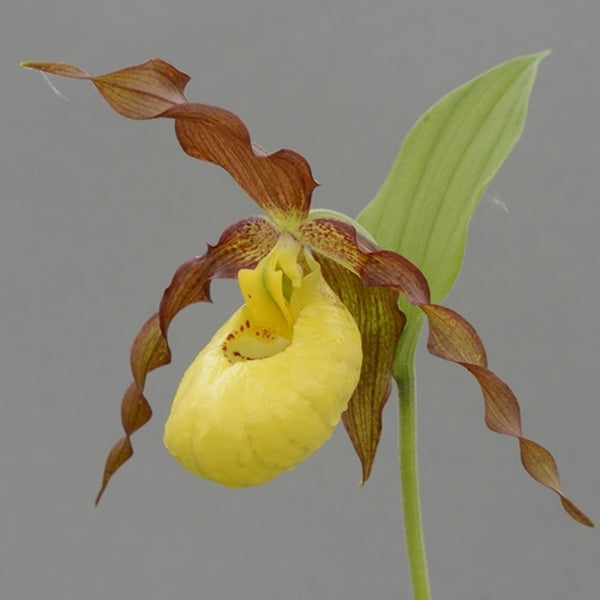
Cypripedium 'Otto'
Calanthe and Cypripedium – odoriferous orchids! Most orchids do not produce a strong scent as orchids tend to be what are called “pollinator parasites.” That means most species trick pollinators into visiting their flowers by resembling something that would have a reward such as pollen or nectar. There are a few that have incredibly pleasant scent. Lady Slippers (Cypripedium), especially the species and those hybrids derived from the American Yellow Lady Slipper (Cypripedium parviflorum), are intensely scented when you sniff closely. One of my favorites is Cypripedium ‘Otto’ which is a hybrid between the European Yellow and American Yellow Lady Slipper. The scent is difficult to characterize; it is pleasant, but unlike anything else. Perhaps the odor helps the flower to lure bumblebees into the inflated lip (labellum) which has an opening like a minnow trap — bees go in but must push up on the column, which contains masses of pollen and the stigma to get out. So, the bee goes in, finds nothing of interest but still pollinates the plant on the only way out. Calanthe orchids, hailing from Asia, have a wide variety of scents that help to advertise its presence. One of my favorites, Calanthe ‘Takane’ — a hybrid of Calanthe discolor and C. sieboldii, has brilliant orangish-yellow flowers and the scent of chocolate! If you’re looking for jaw-dropping beauty in a fragrant flower, consider including these spring bloomers into the mix. Calanthe species (Hardiness Zone 7a-9a) Cypripedium species (Hardiness Zone 4a-7b)
I hope this helps you get an idea of the variation of highly fragrant plants that are possible in your landscape. A quick search of our offerings for fragrant plants will bring up a myriad of others. These are just a few of my favorites but there is so much more to discover as we extend our palate of senses in our home landscapes.

